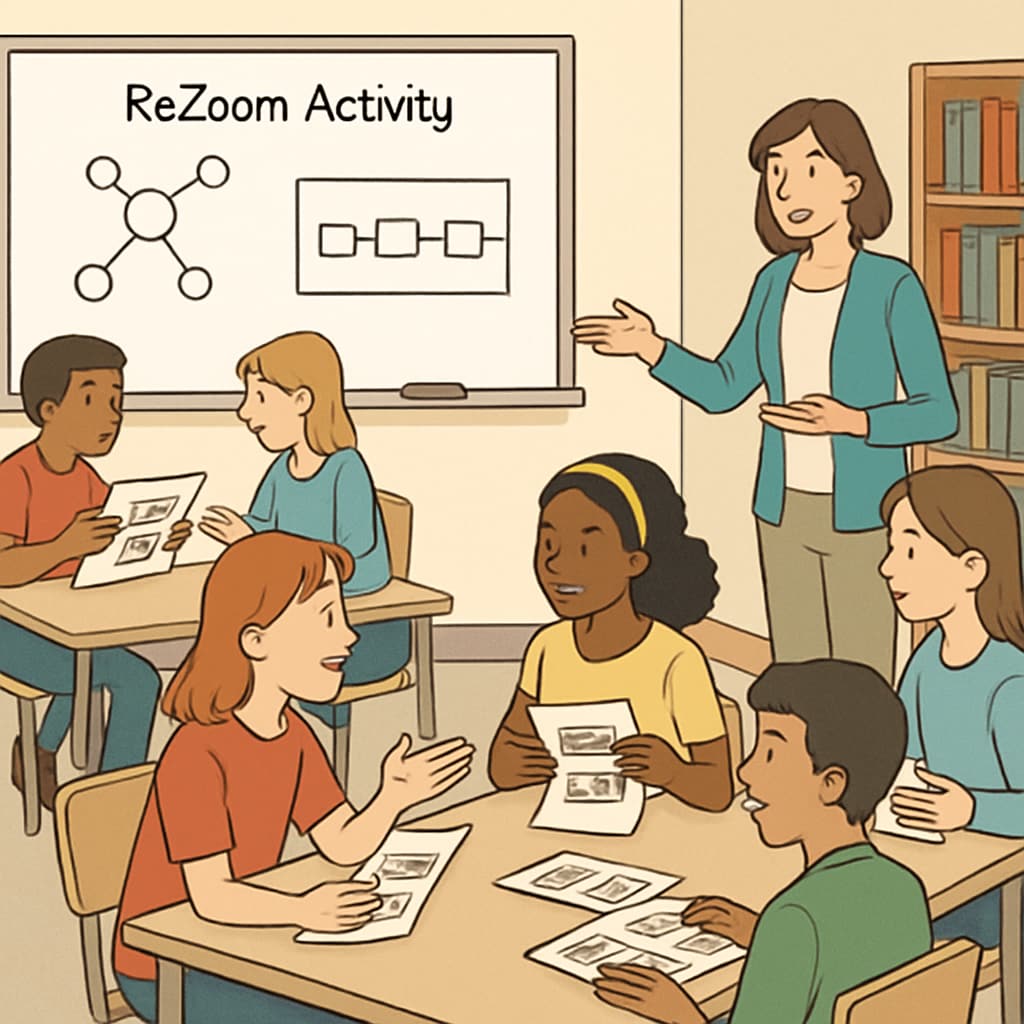Zoom/ReZoom teaching activities are increasingly recognized as effective tools for enhancing K12 classroom engagement. These activities are designed to develop students’ observation and logical reasoning skills by encouraging them to analyze sequences and connections in a series of images or events. However, educators often face challenges in managing resources, such as losing the specific answer sequence or struggling to implement these activities effectively. This article explores the educational value of Zoom/ReZoom activities, provides actionable implementation strategies, and offers solutions for resource management challenges.
The Educational Value of Zoom/ReZoom Activities
Zoom/ReZoom activities revolve around sequences of images that gradually zoom in or out, creating a narrative or thematic progression. These activities help students sharpen their ability to identify patterns, analyze relationships, and think critically. For example, Zoom activities typically involve a close-up image that progressively zooms out to reveal a larger context, while ReZoom activities reverse this process.
- Encourages attention to detail: Students must closely observe each image to understand its role in the sequence.
- Promotes logical reasoning: Participants use deductive thinking to connect images and construct narratives.
- Fosters teamwork: When conducted in groups, these activities enhance collaborative problem-solving skills.
These benefits make Zoom/ReZoom activities particularly valuable for interdisciplinary learning, as they can be adapted to subjects like science, art, literature, and even social studies.

Effective Implementation Strategies for Educators
To successfully incorporate Zoom/ReZoom activities into the classroom, educators need to plan carefully and tailor the activity to the learning objectives. Below are practical tips for implementation:
- Choose appropriate materials: Select image sets that align with your lesson’s theme or subject matter.
- Set clear instructions: Provide students with a clear understanding of the activity’s goals and rules.
- Use visual aids: Display images using projectors or interactive whiteboards to ensure all students can view them clearly.
- Encourage group work: Divide students into teams to foster collaboration and shared problem-solving.
For example, in a biology class, educators can use Zoom activities to explore the structure of ecosystems, starting with a microscopic view of a single organism and zooming out to reveal the entire habitat.

Managing Resources and Answer Sequences
One of the common challenges educators face with Zoom/ReZoom activities is managing answer sequences, especially when resources are misplaced or incomplete. Here are solutions to ensure smooth implementation:
- Digitize resources: Create digital versions of image sets and answer sequences for secure storage and easy sharing.
- Use online platforms: Consider platforms like Google Classroom or Dropbox for organizing and distributing materials.
- Create backups: Always maintain a backup of resources in multiple formats (physical copies, PDFs, etc.).
- Collaborate with peers: Exchange resources and tips with fellow educators through professional networks or forums.
For educators looking to replace lost resources, websites like Wikipedia’s Educational Games and TeachThought’s Zoom Activity Guide offer valuable insights and downloadable materials.
The Benefits in Action
When implemented effectively, Zoom/ReZoom activities can transform the classroom experience by fostering engagement, curiosity, and deeper learning. These activities demonstrate how innovative teaching tools can bridge the gap between traditional methods and modern educational needs.
As a result, educators who incorporate Zoom/ReZoom activities not only enhance their students’ cognitive skills but also create a more dynamic and interactive learning environment. By addressing common challenges like resource management and adapting these activities to various subjects, teachers can ensure their lasting impact.
In conclusion, Zoom/ReZoom teaching activities are more than just engaging tools; they are gateways to developing critical thinking, observation, and teamwork skills in K12 classrooms. By leveraging the tips and resources outlined above, educators can maximize their potential and overcome implementation challenges.


